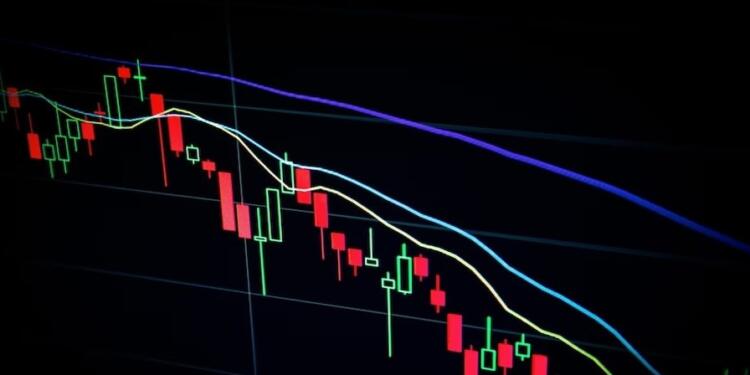In recent years, intraday trading has gained immense popularity in India, with more and more individuals trying their hand at this fast-paced and potentially lucrative trading style.
However, amidst the hype and excitement, one important question remains: What is the best time frame for intraday trading in India? With so many factors at play, it can be challenging for traders to determine the most suitable time frame for their intraday trades.
Factors Influencing Choice of Time Frame
- Volatility: The market’s price fluctuations can greatly impact the choice of time frames in intraday trading. Higher volatility may favour shorter time frames, as there are more opportunities to capitalise on price movements. Conversely, lower volatility may require longer time frames to capture meaningful price changes.
- Liquidity: The availability of buyers and sellers in the market is crucial for executing trades efficiently. Higher liquidity is often found during peak trading hours, making shorter time frames more suitable. During low liquidity, such as pre-market or after-market hours, longer time frames may be preferred to ensure sufficient trading activity.
- Trader’s Strategy: Each trader may have a unique strategy that influences their choice of time frames. Some traders may prefer scalping strategies involving quick trades with small profit targets, necessitating shorter time frames. Others may adopt swing trading strategies, which aim to capture larger price movements over a few days, requiring longer time frames.
- Time of Day: Market dynamics can vary throughout the trading day, affecting the choice of time frames. The opening and closing hours tend to experience higher volatility and liquidity, making shorter time frames more suitable. Middle hours may exhibit more stable price patterns, allowing longer time frames to identify trends and execute trades.
- Market Conditions: External factors, such as economic news releases or corporate earnings announcements, can significantly impact market volatility. Traders may adjust their time frame based on the anticipated impact of these events. Shorter time frames may be chosen during high-impact news events, while longer time frames may be preferred during periods of stability.
- Risk Management: A trader’s risk management approach also influences the choice of time frame. Shorter time frames may require more frequent monitoring and quicker decision-making, which may not be suitable for all traders. Longer time frames provide a broader perspective, allowing for more strategic risk management.
Best Time Frames for Intraday Trading
Early Morning (9:15 AM – 10:30 AM)
During the market opening hours, the Indian stock market experiences high volatility as traders react to overnight news and global market trends. This time frame offers opportunities to capture quick price movements and take advantage of initial market dynamics.
It is a favoured time for traders who employ momentum-based strategies or seek early entry positions. The instant demat account opening can benefit those looking to participate in these volatile market conditions.
xMid-Day Session (11:30 AM – 1:30 PM)
As the morning session progresses, the market often experiences a decrease in volatility and lower trading volumes. This period presents challenges for intraday traders, as price movements may become relatively stagnant and unpredictable.
Traders must exercise caution during this time and may focus on managing existing positions rather than initiating new trades. Proper risk management and analysis of specific stock behaviour are crucial during this mid-day session.
Closing Hours (2:30 PM – 3:30 PM)
The final hour of the trading day is volatile as traders anticipate the closing bell. This period can provide opportunities to capture significant price movements, particularly in response to news releases or market sentiment shifts.
Traders employing trend-following or breakout strategies may find this time frame favourable for entering or exiting trades. However, staying vigilant and closely monitoring market conditions during this volatile period is essential.
Technical Analysis for Selecting Time Frames
- Moving Averages
Moving averages are commonly used technical indicators that help traders identify a security’s overall trend. By calculating the average price over a specific period, such as 50 or 200 days, moving averages smooth out short-term price fluctuations and provide a clearer picture of the market direction.
Traders can use moving averages to determine the best time for intraday trading by observing the alignment of shorter-term moving averages (e.g., 20-day) with longer-term ones (e.g., 50-day or 200-day). A bullish crossover, where the shorter-term moving average crosses above the longer-term moving average, may suggest an uptrend and a favourable time frame for buying.
- RSI (Relative Strength Index)
The RSI is a popular momentum oscillator that measures the speed and change of price movements. It ranges from 0 to 100, with values above 70 indicating overbought conditions and below 30 suggesting oversold conditions.
Traders can utilise the RSI to identify potential trend reversals and determine the best time frame for intraday trading. For example, if the RSI reaches oversold levels and starts to rise, it may indicate a potential buying opportunity. Conversely, if the RSI reaches overbought levels and begins to decline, it could signal a potential time frame for selling or shorting.
- Volume Analysis
Volume analysis is another crucial tool used in technical analysis to assess the strength of price movements. By analysing trading volume, traders can gauge market participation and validate price trends.
Higher volume often confirms the validity of a price move, while lower volume may suggest a lack of conviction. To determine the best time frame for intraday trading, traders can analyse volume patterns during different periods. Higher volume during specific time frames, such as market opening or key news releases, may present favourable trading opportunities.
Tips and Strategies
- Set clear goals and define your trading time frame based on your preferences and style.
- Conduct thorough research and analysis to identify your preferred trading strategy’s most suitable time frames.
- Implement proper risk management techniques to protect your capital and minimise potential losses.
- Stay updated with market news and events that can impact your chosen time frame and make informed decisions accordingly.
- Regularly review and adjust your trading plan to adapt to changing market conditions.
- Practice disciplined trading and avoid impulsive decisions based on short-term fluctuations.
- Utilise technical indicators and chart patterns to identify potential entry and exit points within your chosen time frame.
- Consider using stop-loss orders to limit potential losses and protect your profits.
- Continuously educate yourself and stay updated with evolving trading techniques and strategies.
- Monitor your trades in real-time and adjust as needed to capitalise on emerging opportunities or mitigate risks.
Conclusion
Choosing the best time frame for intraday trading in India can greatly impact their trading strategy and overall success. With the right approach and knowledge, traders can utilise the best time frame for intraday trading in India to their advantage by understanding the different factors that affect the market during different time frames.
































